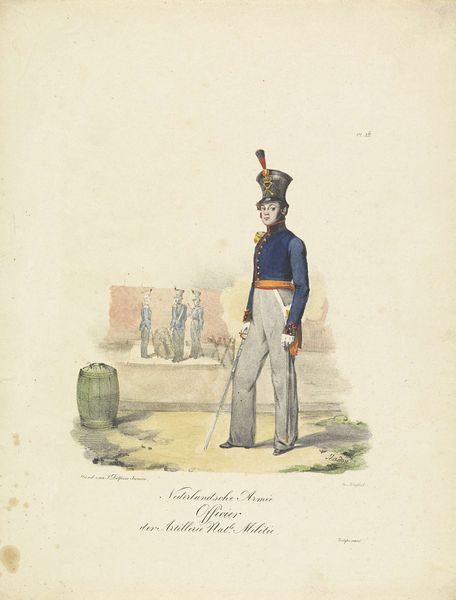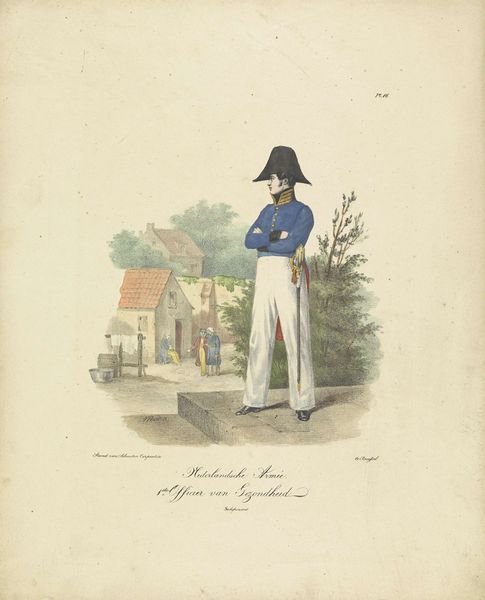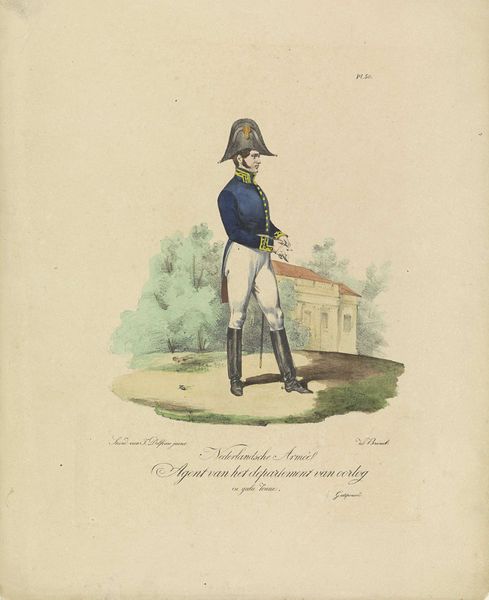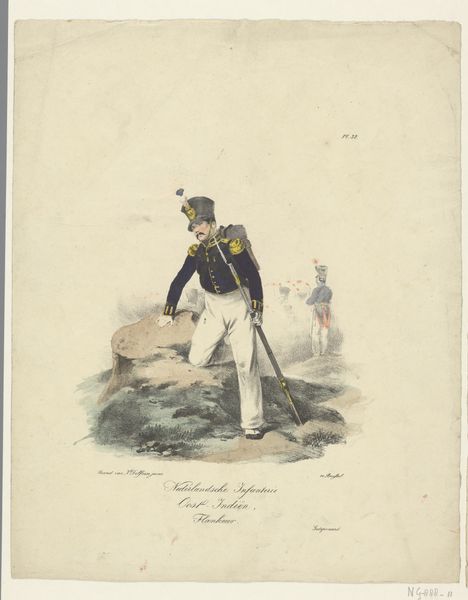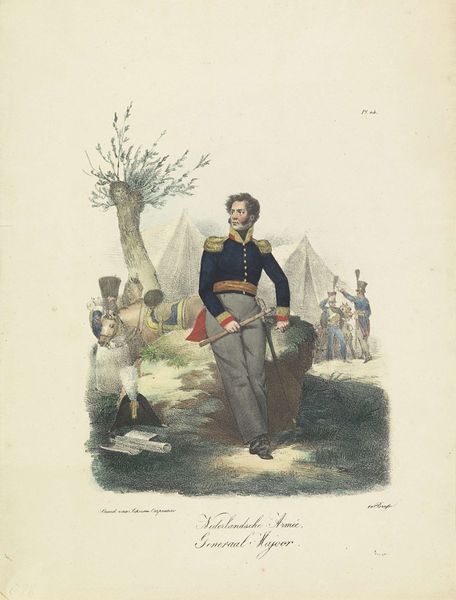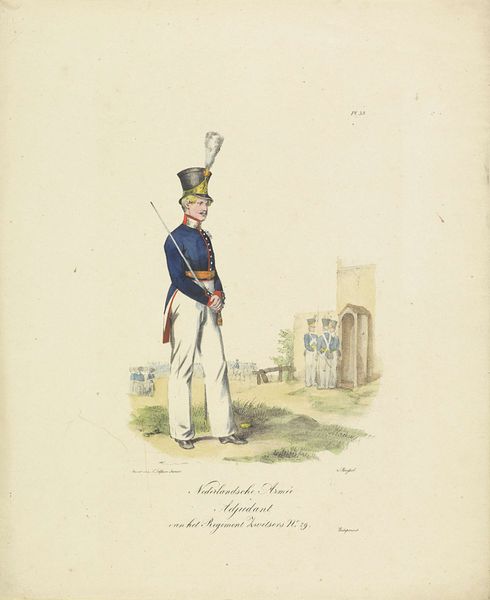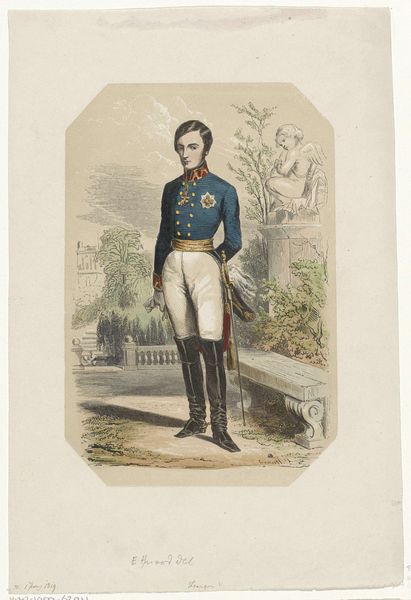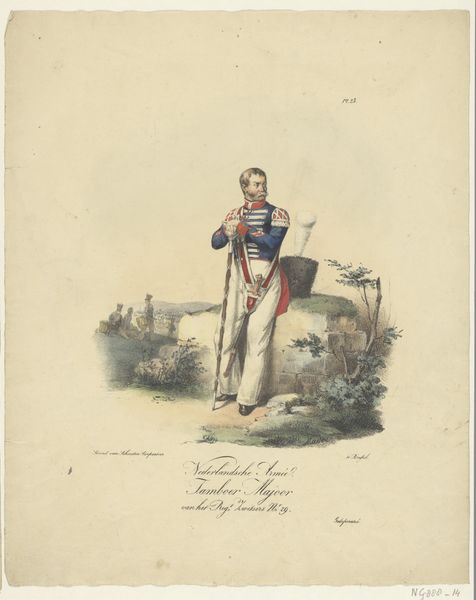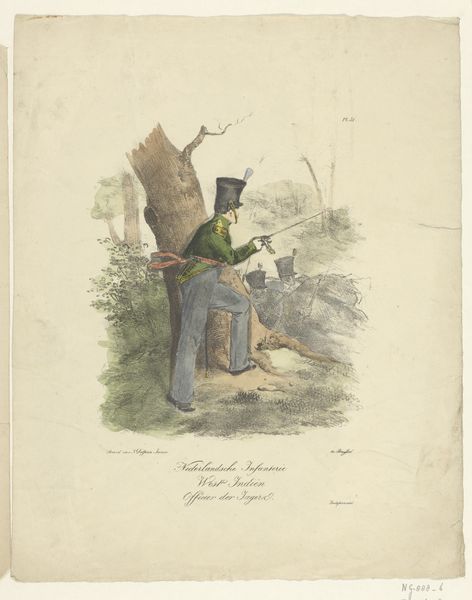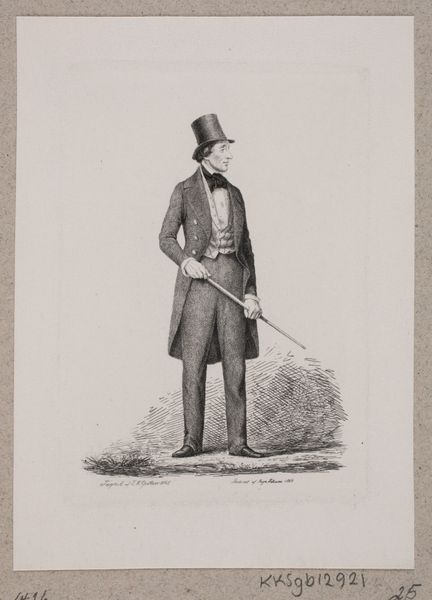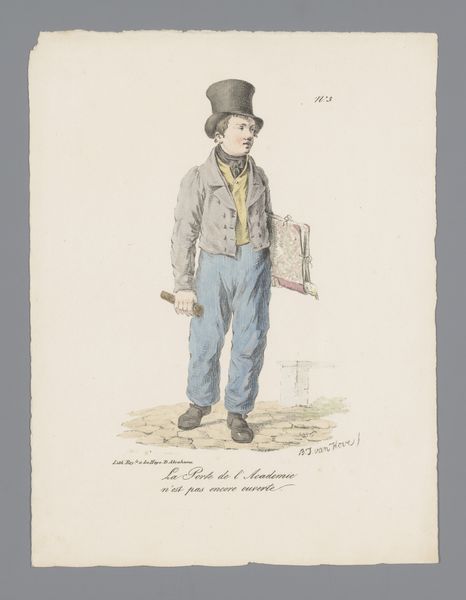
watercolor
#
portrait
#
watercolor
#
romanticism
#
watercolour illustration
#
genre-painting
Dimensions: height 368 mm, width 294 mm
Copyright: Rijks Museum: Open Domain
Editor: Here we have Jean-Baptiste Madou’s “Retired Captain,” a watercolor work made around 1825-1827. There’s a quiet melancholy to this gentleman, even with the vibrant blue of his jacket. What do you see when you look at this piece? Curator: Ah, yes, Madou. He always had a way of capturing the wistful spirit, didn't he? It's more than just a portrait; it's a story hinted at, not shouted. I see a man caught between two worlds – the martial pride of his past symbolized by the upright posture and the faintest ghost of a swagger, yet now tethered to the quieter pursuits hinted at by the muted palette around him. Notice how the colors bleed, as if the painting itself is sighing? It’s less a bold proclamation, more a memory softly spoken. Don’t you think the way the light falls feels almost… apologetic? Editor: Apologetic? That’s an interesting word choice. Is that maybe reflecting a societal change? Curator: Precisely! It's Romanticism wrestling with the fading light of the Enlightenment. The captain is a symbol, yes, but of a generation grappling with a shifting world order. The Dutch army itself was in flux. And what’s he thinking, clutching his helmet? Is it longing, regret, relief? Maybe it’s all three mixed together, like watercolor paints mingling on wet paper! Editor: I hadn’t considered the helmet like that. It seems almost like a prop in a play. Curator: Exactly! Madou wasn’t just documenting, he was composing a moment of introspection, placing his captain center stage in the theater of memory. We're left to fill in the blanks, paint our own narrative onto his faded uniform. Isn't it fascinating how much feeling he evokes with just watercolor and paper? Editor: It is. I'm definitely going to look at Madou’s other works to see these “stories.” Thank you for showing me how much a single image can contain.
Comments
No comments
Be the first to comment and join the conversation on the ultimate creative platform.
